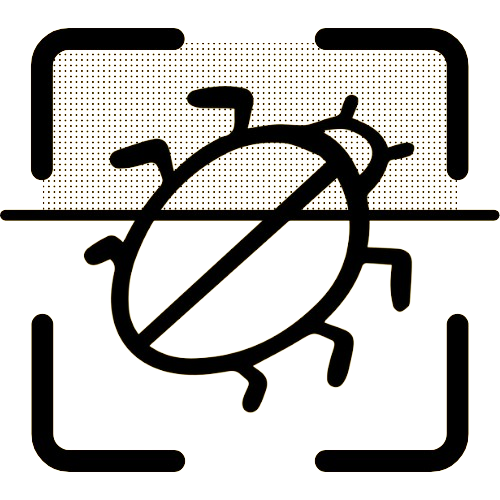Expert Advice: How to Check for Bed Bugs in Your Home
May 11, 2025
When it comes to safeguarding your home against the unwelcome presence of bed bugs, understanding how to check for these pests is essential. Known for being both notoriously elusive and tenacious, bed bugs can quickly transform a peaceful home into a source of stress and discomfort. By arming yourself with knowledge on identifying typical bed bug habitats, recognizing visual signs, and understanding early infestation indicators, you can take proactive steps to protect your living space. Let’s dive into expert advice on how to conduct a thorough bed bug inspection, use advanced tools like Bedbug Scanner for accurate detection, and create a prevention plan to keep these critters at bay.
Identifying Bed Bug Habitats
Before you begin a thorough bedbug inspection, it’s crucial to know where to look. Understanding common bed bug habitats will guide your search and make it more effective. Bed bugs prefer warm environments where they have easy access to their food source—typically human blood. Therefore, the first places to check are the areas where you sleep and lounge.
Start with your bed, focusing on the mattress seams, under the mattress tag, and along the bed frame. Don't forget the headboard. Move on to examining nearby furniture, such as nightstands, upholstered couches, and recliners. Bed bugs can also hide in folds of curtains, inside electronics, and even behind wall hangings.
Visual Signs of Bed Bugs
Identifying bedbug signs and symptoms is the next step in your bed bug inspection process. One of the most apparent signs of bed bugs is their fecal spots, which appear as tiny black or dark brown specks, akin to ink dots, on bedding and furniture. Other visual indicators include pale-yellow exoskeletons that nymphs shed as they grow and rusty or reddish stains on sheets or mattresses caused by crushed bugs.
Observe your sleeping quarters for these signs with a magnifying glass if necessary. Keep in mind that while adult bed bugs are small, they are visible to the naked eye, typically about the size of an apple seed.
Early Infestation Indicators
Recognizing early signs of an infestation is crucial in curbing its spread. During your inspection, be alert to unusual odors as bed bugs emit a musty, sweet scent at higher concentrations. Look for signs of bites, though bite reactions differ among individuals. Raised, itchy welts clustered together are common.
Understanding what to look for is half the battle. If you suspect a burgeoning infestation, your best course of action is to utilize specialized tools alongside your physical inspection.
Using Bedbug Scanner for Accurate Detection
While manual inspections are valuable, combining them with technological tools like Bedbug Scanner significantly increases detection accuracy. Utilizing cutting-edge AI technology, Bedbug Scanner allows you to upload images from suspected areas. The tool analyzes these images for potential infestations, providing you with fast, reliable results.
This technology is particularly beneficial for those unable to identify bed bugs on sight or want additional confirmation of their presence. Using Bedbug Scanner not only saves time but also affords peace of mind by ensuring no corner is left unchecked.
DIY Bed Bug Inspection Checklist
Conducting a DIY bedbug detection requires a methodical approach. Here's a handy checklist to follow during an inspection:
-
Preparation: Equip yourself with a magnifying glass and a torch. Wear gloves to handle items safely.
-
Target Areas: Focus on mattresses, box springs, bed frames, and nearby furniture.
-
Look for Signs: Search for fecal spots, shed skin, and live bugs.
-
Inspect Closely: Use the torchlight to examine cracks, creases, and seams.
-
Record Findings: Take photos to upload to the Bedbug Scanner for further analysis.
By following this checklist, you empower yourself with DIY expertise that can help confirm the presence of bed bugs before escalating to professional intervention.
Creating a Bedbug Prevention Plan
Preventive measures are as essential as inspections. Start by encasing your mattress and box springs with protective covers designed specifically for bed bugs. Reduce clutter around sleeping areas and ensure vacuuming is thorough and regular. Washing bedding at high temperatures can kill bed bugs and their eggs.
Routine checks are also beneficial, especially for frequent travelers. If you discover signs of bed bugs, quickly isolate and treat affected items.
For deeper insights into bed bug infestations, consider reading our article on identifying bedbug infestations.
Conclusion
Mastering the art of how to check for bed bugs is key to maintaining a bug-free home. By identifying potential habitats, recognizing visual and early infestation signs, using tools like the Bedbug Scanner, and adhering to a rigorous inspection process, you can catch infestations early and take effective action. Prevention is always better than cure; thus, implementing a robust prevention plan can save you time and resources in the long run.
For further support, visit Bedbug-Scanner.com and let our advanced AI technology help you achieve peace of mind with precision detection and insightful educational resources.
